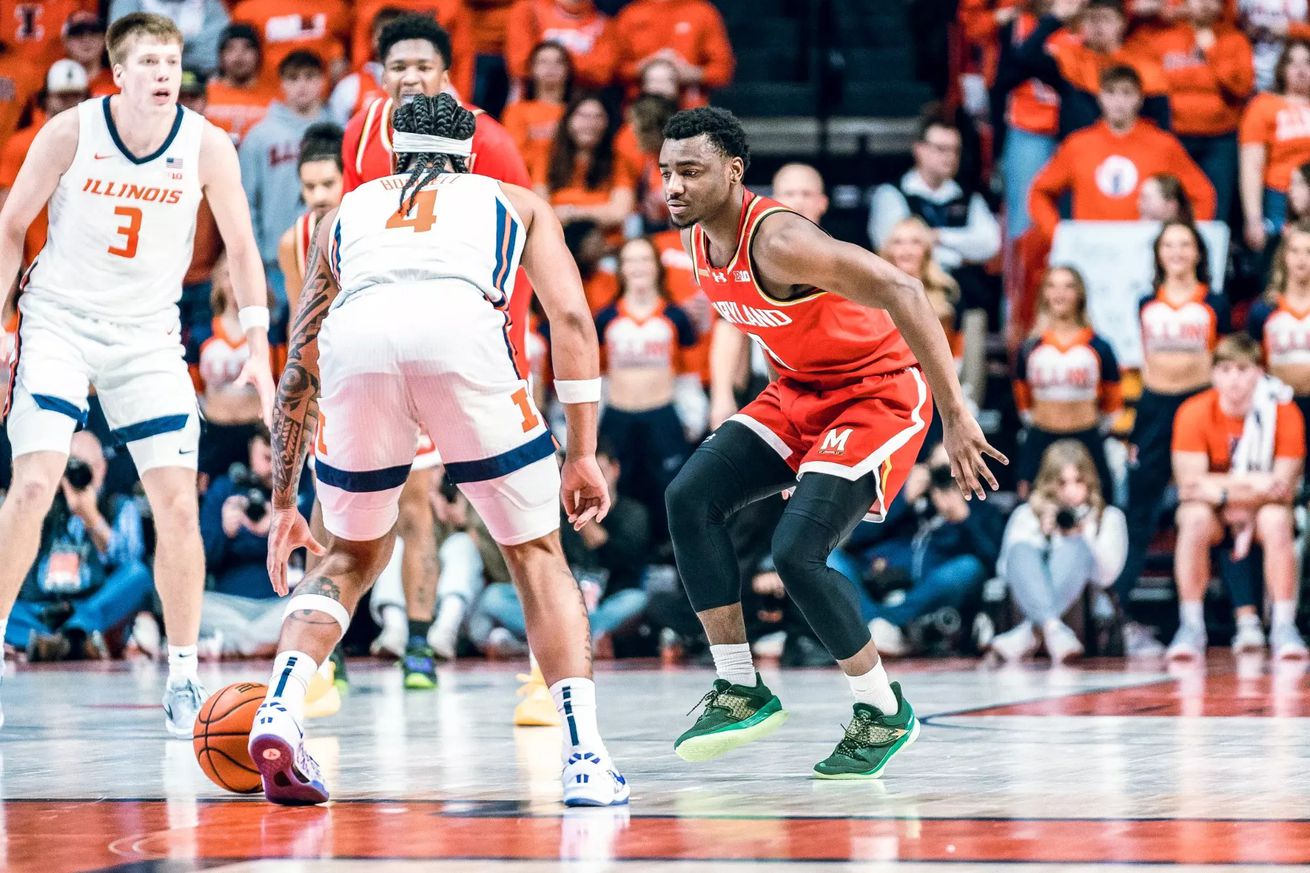
The Terps won their second ranked matchup of the season.
After pulling off a tight 69-66 win over Nebraska Sunday, Maryland men’s basketball continued its success — and on the road this time.
After suffering heartbreaking losses at Washington and then-No. 9 Oregon, the Terps took care of business well before the final buzzer sounded at No. 17 Illinois, winning 91-70.
Here are three takeaways from the game.
Maryland relied on its interior scorers
Before tip-off, it was reported that Tomislav Ivisic, Illinois’ leading rebounder by a significant margin (8.5 rebounds per game), was out due to illness.
As a result, the Terps did their best to capitalize in the paint throughout the contest. In the first half, this approach was apparent. They attempted just three 3-pointers, and all 18 of their field goals made in the first 20 minutes came inside the arc.
In the opening half, Maryland won the points in the paint battle, 34-18. This came courtesy of huge starts from Julian Reese and Derik Queen, who had 14 and 13 first-half points, respectively, a combined for 71% of the team’s first-half points.
Both shot more than 50% from the field in the first half as well. Their production not only came on mismatches in the paint, but also on jumpers that connected from mid-range.
The Terps only continued to feed its two towering scorers in the second half, as they scored 10 of the team’s first 14 points. Down the stretch, it was free-throw shooting as a result of its interior prowess that helped propel Maryland to the victory — it went 14-of-18 from the free-throw line in the half.
Queen finished with 25 points, six rebounds and four assists, while Reese ended the night with a game-high 27 points and 17 rebounds. Maryland scored 62 points in the paint, its most since 2019.
The Terps’ defense was stifling
Maryland clung to just a 38-35 lead at the end of the first half. But in the second, it expanded that lead slowly but surely — partly due to its defensive intensity.
Its main means of taking advantage Thursday was forcing Illinois into copious mistakes. Instead of employing a full-court press, as it has on numerous occasions, the Terps dominated in the half court.
The Terps forced 16 Illini turnovers, and scored 27 points off them, while Illinois managed just four points off Maryland turnovers.
Activity in passing lanes and wherewithal around the hoop made steals easy. The Terps were quick to fly around the court and recover on switches, even on Illinois’ perimeter passing. As a result, Maryland finished the game with 10 steals, while the Illini totaled just two.
What was possibly most impressive about the defensive effort was Maryland’s ability to quickly turn misses into offense. On the evening, the Terps garnered 17 fast-break points. Illinois scored just three.
Maryland’s lack of bench production didn’t matter
Head coach Kevin Willard inserted four players off the bench Thursday: Jay Young, DeShawn Harris-Smith, Tafara Gapare and Malachi Palmer, who played just one minute. They combined for just two points, both of which came from Gapare free throws.
Instead, Willard rode his starting group, who hadn’t played since Sunday. Each of them accumulated more than 30 minutes of playing time, with Gillespie tying for a game-high 36.
But whether riding the starters for extended minutes in high-stakes matchups remains is yet to be seen. With the Terps slated to play three more ranked opponents — as well as having their sights set on both Big Ten Tournament and NCAA Tournament runs — it will be worth monitoring if this trend persists.
